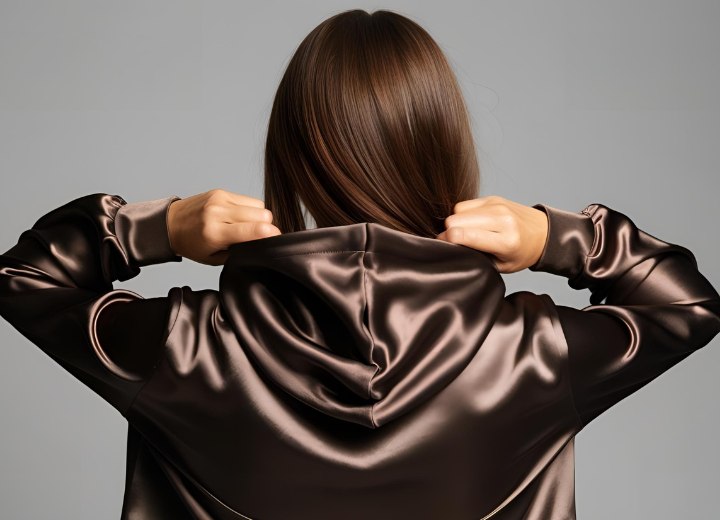Shiny Optical Illusion

A: Your boyfriend's observation is actually quite astute, and the answer involves both optical science and the inherent properties of your hair. What he's noticing isn't purely coincidental, nor is it entirely an optical illusion. It's a fascinating combination of both factors working together to create a more luminous overall appearance.
When you wear fabrics with similar reflective properties - silk, satin, or other shiny materials - something interesting happens optically. The light bouncing off your clothing creates what's known as "reflected illumination" or "ambient light reflection." This additional light source brightens the area around your face and shoulders, where your hair naturally falls. The increased ambient light allows more photons to interact with your hair's surface, making its existing shine more visible and apparently more intense.
The optical enhancement works through a principle called "luminosity contrast." When shiny fabrics and shiny hair are in close proximity, they create a harmonious visual field where both elements appear more radiant than they would individually. Your eye perceives this as your hair looking shinier, when in reality, you're seeing your hair's natural shine under more favorable lighting conditions created by the reflective fabric.

It's important to understand that the fabric itself cannot create shine where none exists. If your hair were damaged, extremely dry, or had a roughened cuticle layer, no amount of shiny clothing would make it appear shiny. The fabric can only enhance and highlight the shine that's already present in healthy hair.
There's also a practical element to consider with silk and satin garments. These smooth, low-friction fabrics are significantly gentler on your hair than rougher textures. Cotton or wool can snag hair strands, potentially lifting the cuticle and reducing natural shine over time. When you wear silk or satin, especially around the neckline where fabric touches your hair, you're actually protecting your hair from mechanical damage.

©Hairfinder.com
See also:
How to get glossy pin straight hair
Causes of dull hair and how to make your hair shiny
How to prevent static hair when wearing nylon clothes
When you have long hair is it better to wear silk and satin blouses?